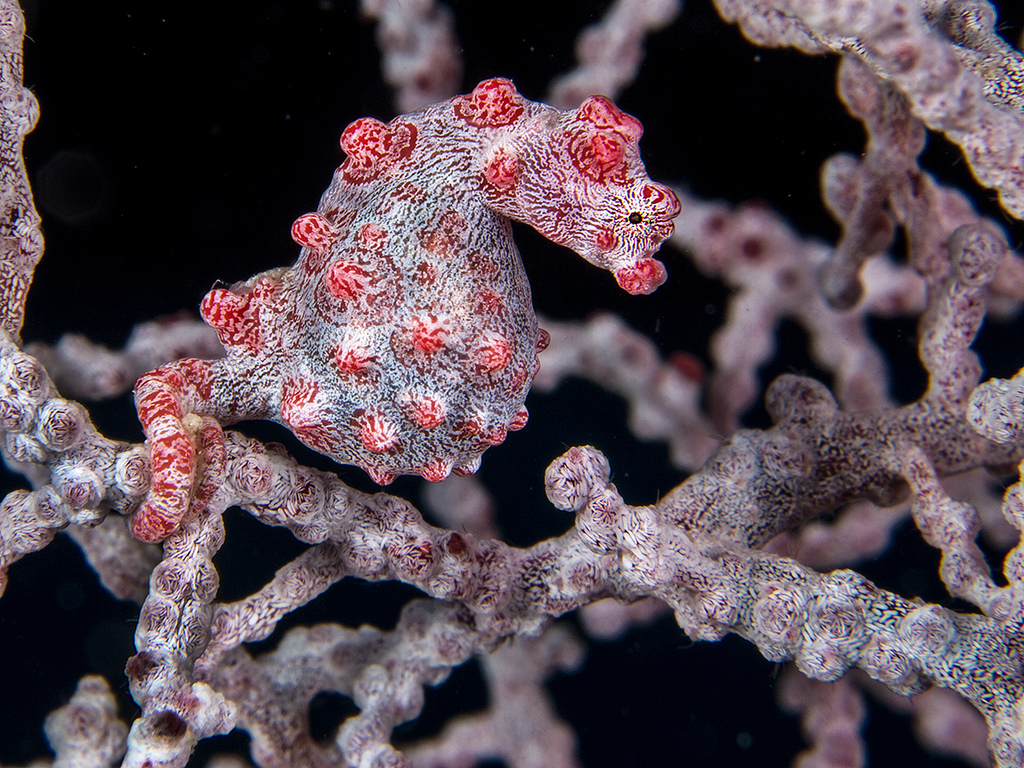Reproduction
It is believed that there are
between 32 and 50 species of seahorses (genus Hippocampus) in
the world. The Pygmy Seahorse was discovered in 1969 by Georges
Bargibant when he found a pair of them attached to a gorgonian
sea fan. Bargibant collected the animals and brought them to the
Nouméa Aquarium in New Caledonia (Lourie and Randall 2003).
As can be seen in the first phylogenetic tree on the
Classification page, Hippocampus bargibanti is an
early- diverging lineage in the Hippocampus genus. From the
later phylogenetic tree, it can be seen that the Syngnathidae
group not only includes seahorses, but pipefish as well. After
that, the most recent common ancestor is the Ghost pipefish.
Pipefish are very similar to seahorses , but are more of a worm
shape.
 Breeding for the Pygmy seahorse happens year round and
like all organisms in the Hippocampus genus, the male carries
the fertilized eggs in its brood. The process begins by the
female inserting what would look like male genetalia in most
other organisms into the male’s brood and placing the eggs. The
male then fertilizes the eggs and cultivates them in its brood.
The gestation period for Hippocampus bargibanti is about two
weeks and its brood size is usually about 34 young from one male
(Lourie and Foster 2004).
Breeding for the Pygmy seahorse happens year round and
like all organisms in the Hippocampus genus, the male carries
the fertilized eggs in its brood. The process begins by the
female inserting what would look like male genetalia in most
other organisms into the male’s brood and placing the eggs. The
male then fertilizes the eggs and cultivates them in its brood.
The gestation period for Hippocampus bargibanti is about two
weeks and its brood size is usually about 34 young from one male
(Lourie and Foster 2004).
Bargibant’s seahorses are often found in pairs or
groups, as their breeding lasts year round. They have been found
with up to 28 on a single gorgonian fan (Lourie and Foster
2004).
To learn how this pigmy seahore interacts with other species,
click
here.
To go back to the home page, click
here.